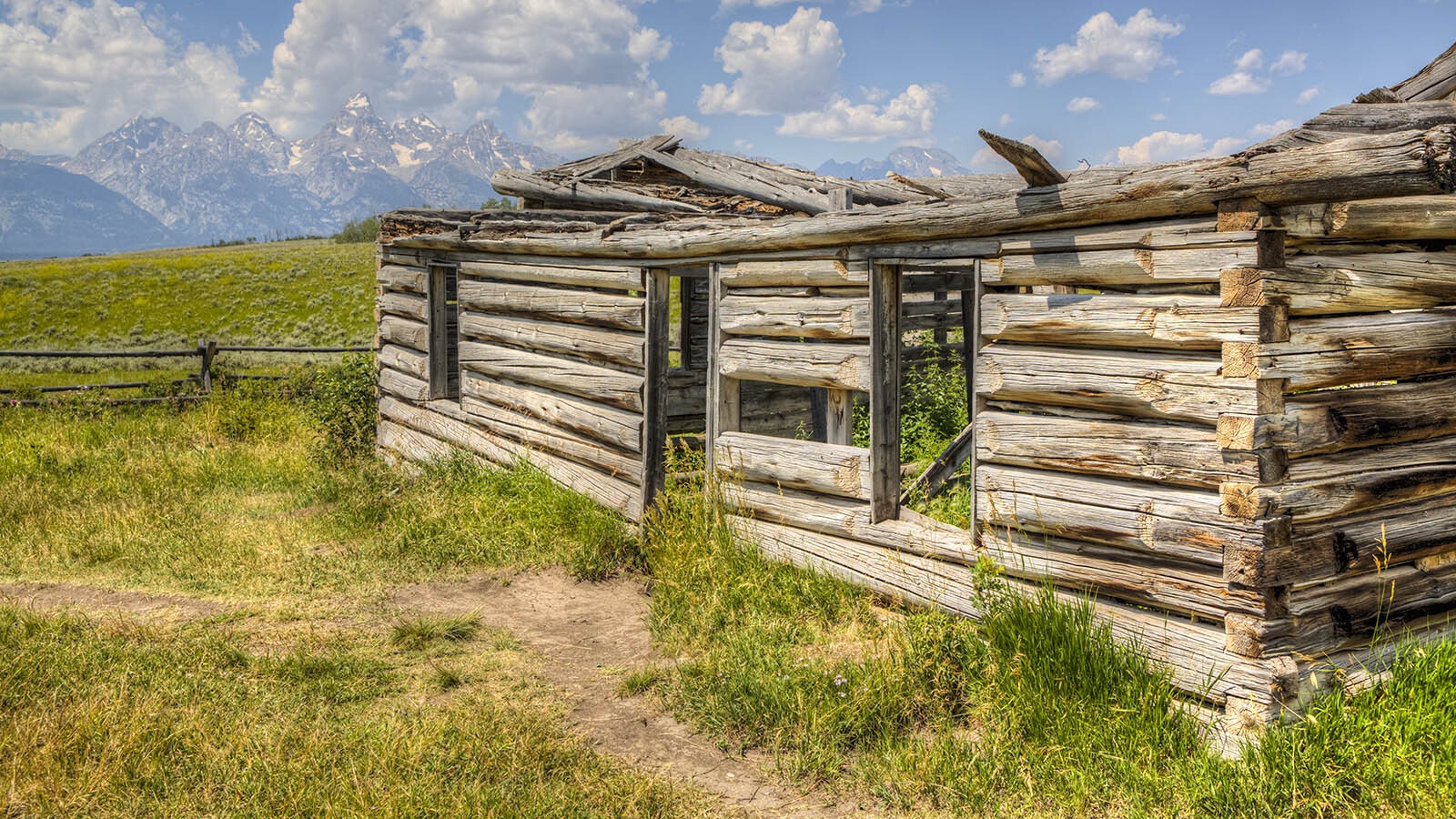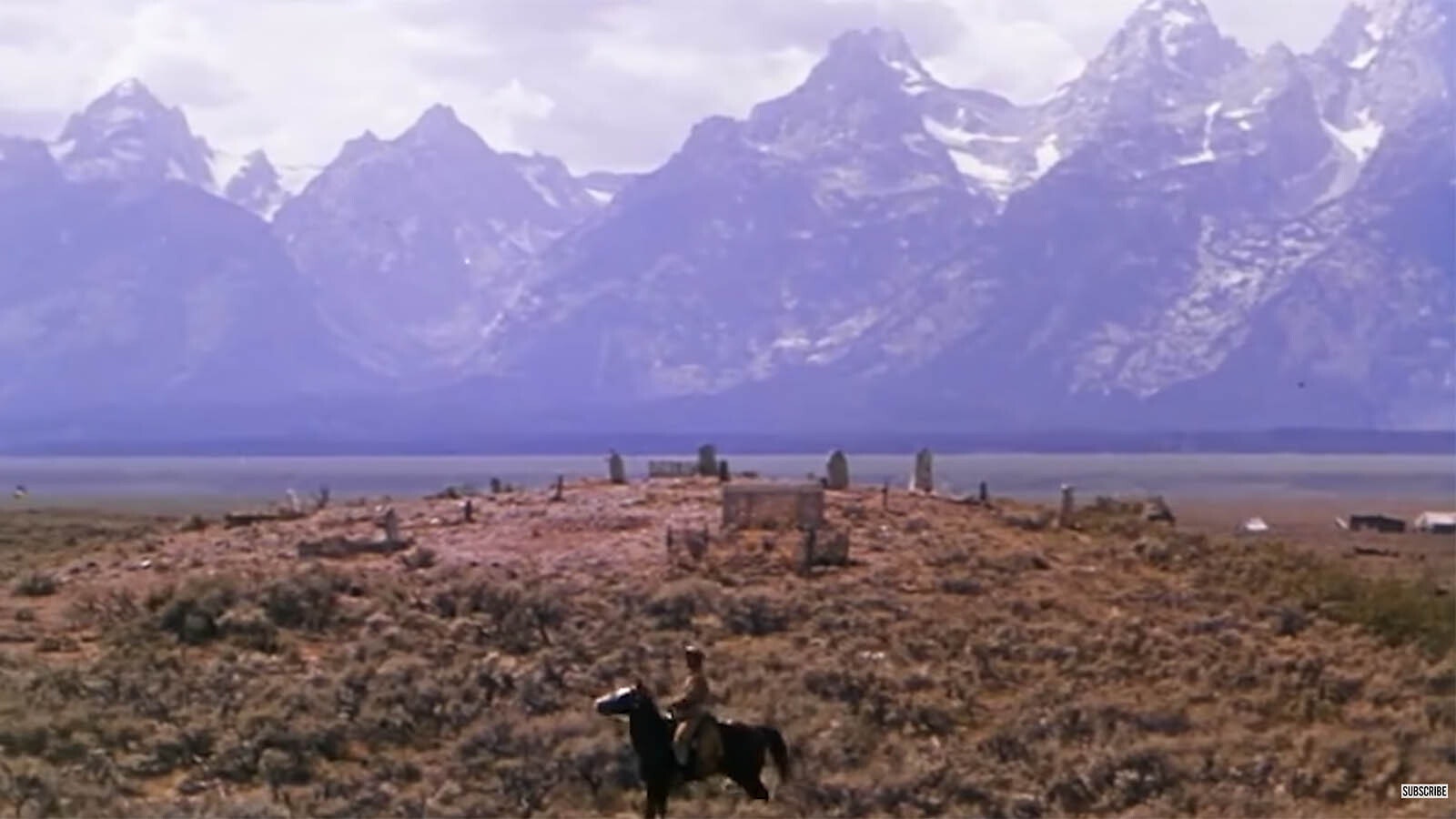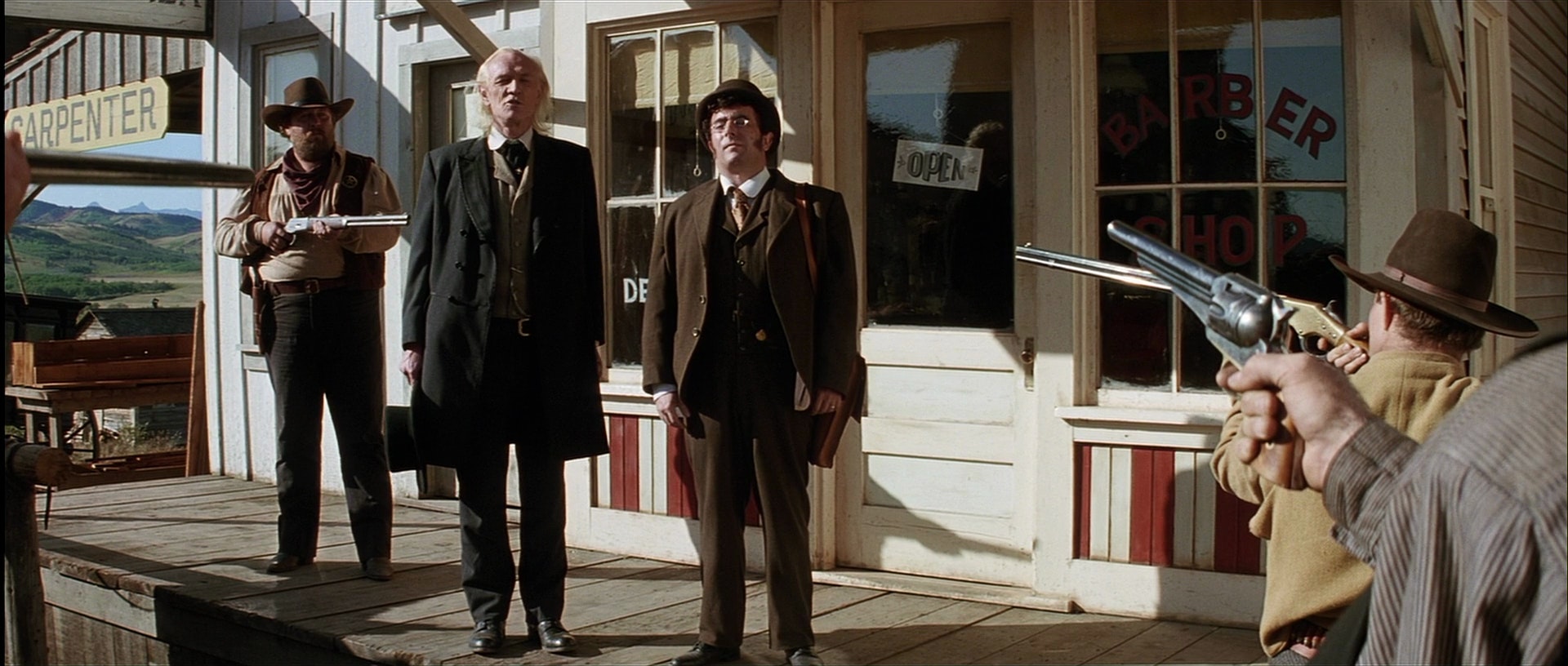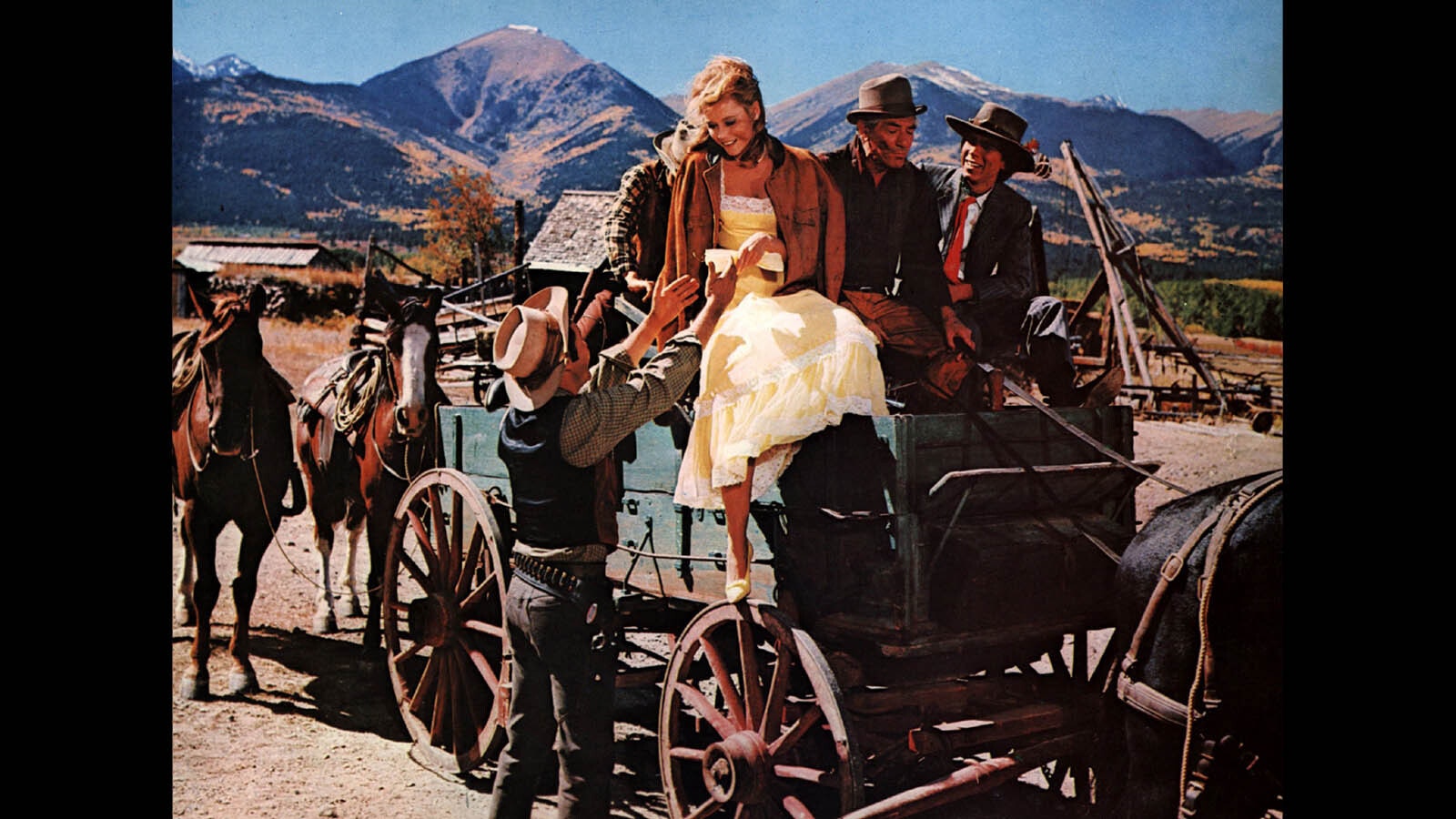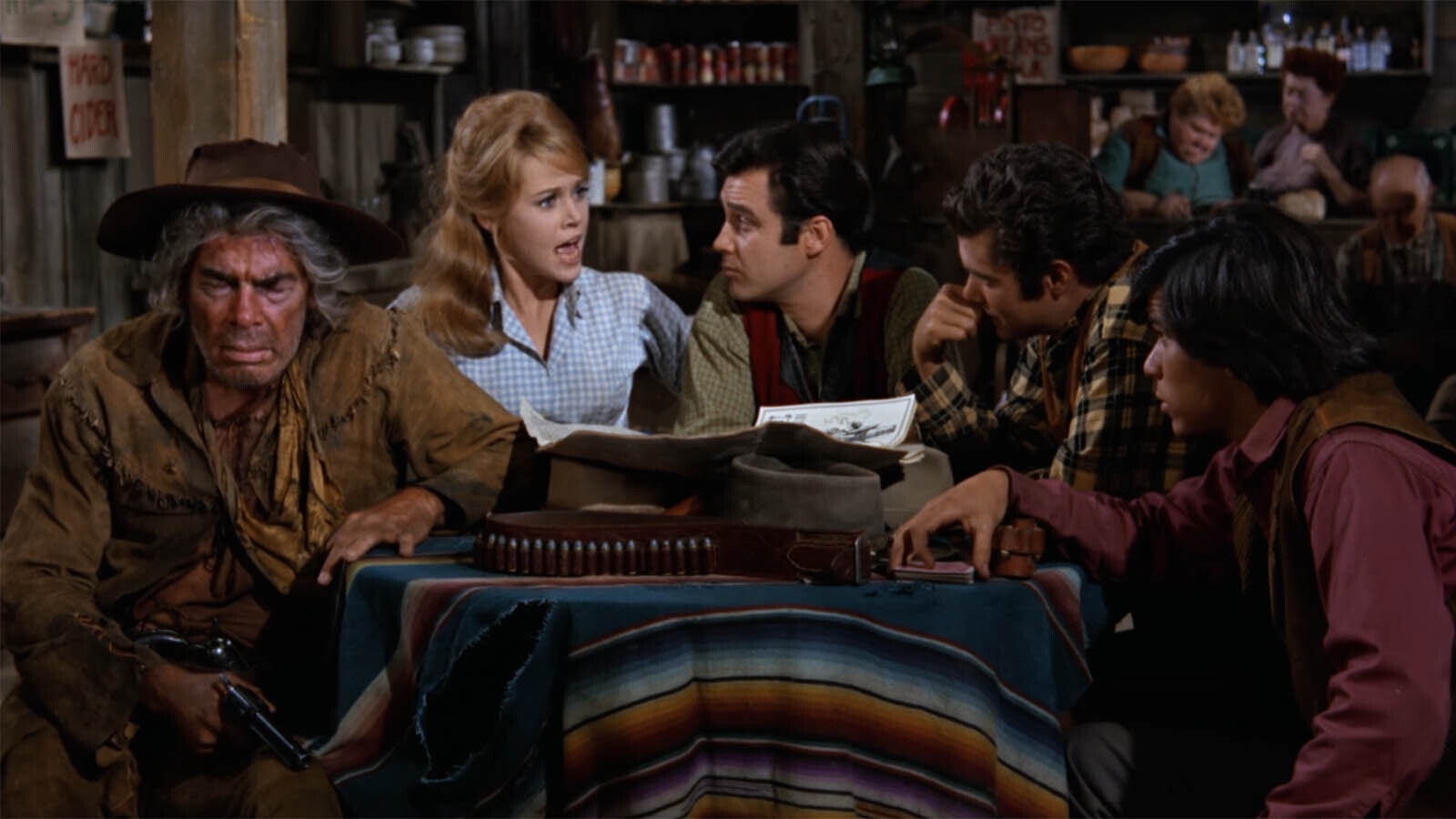The American Film Institute defines Westerns as films "set in the American West that embody the spirit, the struggle and the demise of the new frontier."
The themes and aesthetics of the Western genre are prevalent throughout the American West, but perhaps nowhere as pronounced and authentic as Wyoming, where Western culture is dominant. That why it makes sense that the Cowboy State is a favorite choice for setting and filming Westerns.
And Wyoming’s Westerns include some of the genre's most revered films ever made.
But while it’s often a backdrop for Hollywood productions, it’s rarely a background. Wyoming can simultaneously be seen everywhere and almost nowhere.
The Good, The Better, And The Best
Steve Latshaw is a filmmaker and historian with more than 30 credits as a writer and director. He is also a historical advisor for the Museum of Western Film History in Lone Pine, California, a community used as a location for countless Western films and television shows.
Latshaw said he was “astonished” when he realized how prevalent Wyoming is in the Western genre.
“When I think of Westerns, you tend to default to the obvious states: California, Arizona, New Mexico, certainly Texas,” he said. “However, there were not only a significant number of Western films set in Wyoming, but a significant number of important Westerns. That’s critical.”
He is not alone in that opinion. In 2008, the American Film Institute (AFI) published its 10 Top 10, lists of the 10 greatest American films in 10 film genres, including Westerns.
Of the top 10 Westerns on AFI’s list, four — “Cat Ballou,” “Butch Cassidy and the Sundance Kid,” “Unforgiven” and “Shane” — are set in Wyoming. At 40%, that makes the Cowboy State better represented than any other state on the list.
But that’s representation as a setting for these films, not as a location for actually making them. Of those four, only “Shane” was set and shot in Wyoming. That’s because there are two sides to Wyoming’s place in Western films: as a setting and as a location.
As A Setting
American writer Frank Gruber identified seven “basic plots” for Westerns. While not universal, most follow at least one of these seven storylines: the Union Pacific, the Ranch, the Empire, the Revenge, the Cavalry and Indian, the Outlaw, and the Marshal.
Each plot has its staples and characters, such as the elaborate chases and mystery of the Revenge Story or the threats of rustlers and nefarious landowners in the Ranch Story. Most Westerns incorporate some of these tropes.
Based on the basics of the seven plots, Latshaw can see why Wyoming is such a critical and prized setting for Western films. It’s a lot easier to build characters and stories when the state’s history already has such fertile history for the plot.
“Whenever you're going to write a Western, particularly a period Western or historical Western, you're going to look for story ideas in terms of the history that was there,” he said. “In other words, are there real-life stories? And there are so many dramatic events in Wyoming that would be a good setting for the characters and a story you want to tell.”
There are tons of precedents for all the basic Western plots in Wyoming’s history. The Johnson County Wars, the construction of the Transcontinental Railroad, the Hole in the Wall Gang, other outlaws and gunslingers, and countless other authentic histories rife with dramatic potential.
Of course, all Western states have historical fodder for Westerns, like The Alamo in Texas or the OK Corral in Tombstone, Arizona. But Wyoming has a little bit of everything.
“When you're setting a film in the American West, you're going to look for historical lynchpins to sort of hang your story on,” Latshaw said. “I think Wyoming is up there with many states with rich and vivid stories.”
Hollywood built its prestige and profits by transporting audiences to any place and time to tell compelling stories. But that doesn’t mean film studios actually have to go there to be there, and that has been Hollywood’s approach for most of Wyoming’s Westerns.
As A Location
While plenty of Westerns are set in Wyoming, the state is largely absent from its own filmography. In his research, Latshaw was equally surprised by its prevalence and absence.
“It appears that Wyoming has been more important as a dramatic setting than an actual filming location,” he said. “There haven't been a huge number of Westerns that were actually filmed there, which was really interesting.”
There are frequent Wyoming “cameos” in Western cinema. “The Outlaw Josey Wales,” “Dances with Wolves” and “Django Unchained” are important Westerns that include scenes shot in Wyoming, usually the iconic facade of the Tetons.
Of AFI’s four Wyoming Westerns:
- “Butch Cassidy and the Sundance Kid” filmed its Wyoming scenes in Utah.
- “Unforgiven” was primarily filmed in Alberta, Canada (a popular Wyoming stand-in)
- Buckskin Joe Frontier Town, a combination film studio and theme park in Cañon City, Colorado, was the location for “Cat Ballou’s” production.
Wyoming isn’t and hasn’t ever been a go-to location for Western films or films in general.
One much-noted reason is the lack of a state film incentive. Productions often choose to film in states that provide incentives to shoot there, usually in the form of tax credits, exemptions, cash grants and fee-free locations.
The latest attempt to make Wyoming more appealing to filmmakers by offering rebates based on their Wyoming expenses died on the state House floor during the 2023 session of the Wyoming Legislature.
Latshaw believes there’s another significant reason why Wyoming isn’t a more popular film location, and it's one Wyomingites know all too well.
“That may be simply down to climate,” he said. “Looking at the weather tables, it appears that fall, winter and spring tend to be cold. That narrows the window of when you can shoot comfortably in Wyoming. So that may be a major factor.”
But bad weather and lack of incentives haven’t stopped passionate film producers in the past. A notable example is 1953’s “Shane,” which was almost entirely filmed in Jackson and Grand Teton National Park.
“George Stevens, a powerful A-list director at the time, (wanted) the best possible locations for his film,” he said. He didn’t want the movie “to look like it was shot in Chatsworth, California, or even Lone Pine. He wanted authentic locations and certainly had the clout to say, ‘No, I want to shoot regardless of whatever hardships. I want to shoot this in Wyoming because that's what the look is.’”
In the case of “Shane,” the authenticity of Jackson’s picturesque landscapes contributes to the film's overall effect, often cited as one of the greatest Westerns ever made. It’s one of several Western films preserved in the U.S. Library of Congress.
Wyoming’s Westerns
Regardless of its lack of physical screen time, Westerns set in Wyoming are amongst the best told in the genre. They range from some of the earliest forays on film to vast epics of Western melodrama to the most stinging critiques of the genre and the history it draws from.
“I think writers and filmmakers saw that it was an important setting for a great Western film,” Latshaw said. “Wyoming has so much history, and it's very picturesque. It's just beautiful country. A lot of films have been set in Wyoming because of its history and because it was so deeply involved in the history of the Western expansion. That's key to its success.”

Andrew Rossi can be reached at arossi@cowboystatedaily.com.



